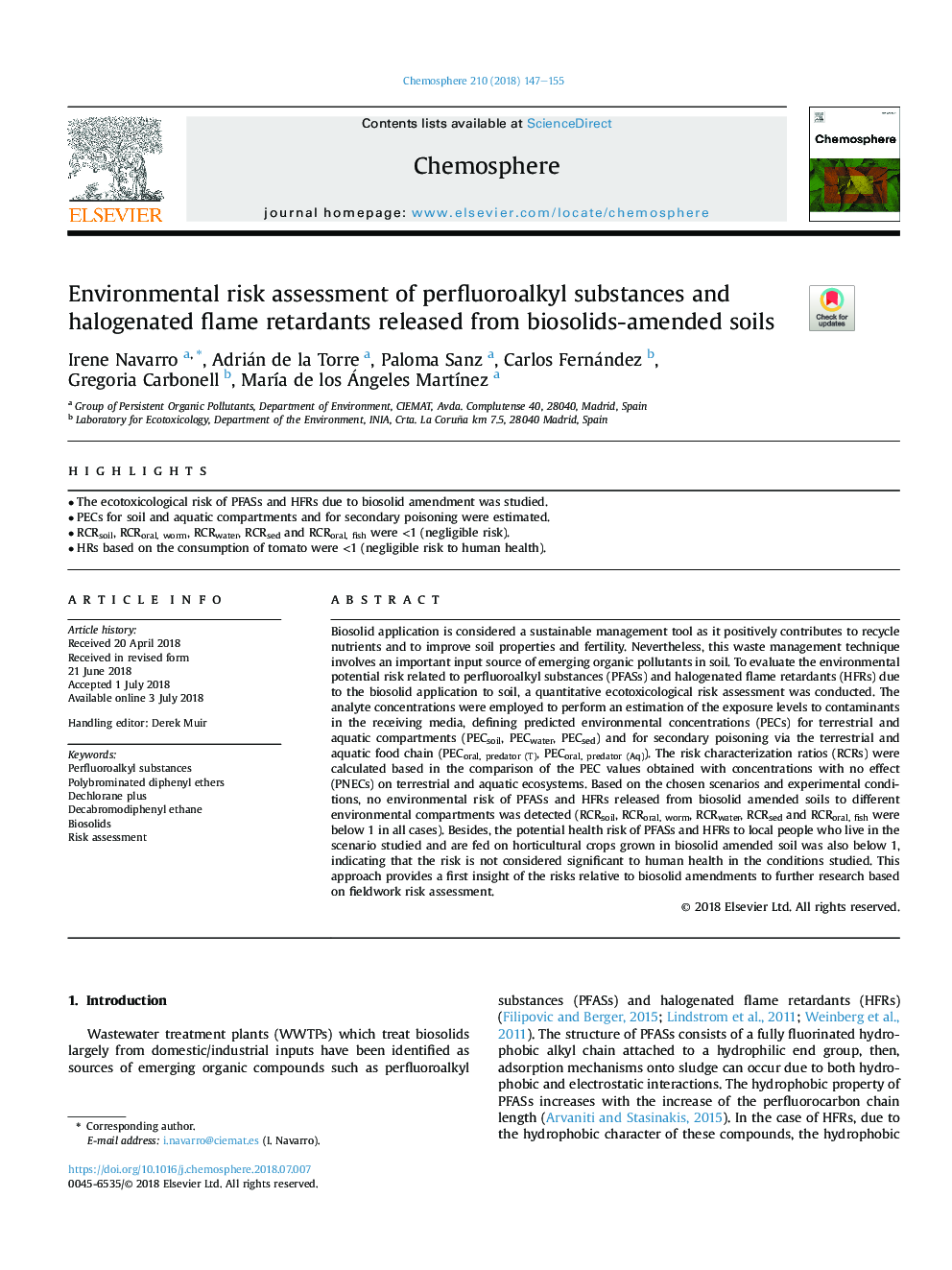| Article ID | Journal | Published Year | Pages | File Type |
|---|---|---|---|---|
| 8850382 | Chemosphere | 2018 | 9 Pages |
Abstract
Biosolid application is considered a sustainable management tool as it positively contributes to recycle nutrients and to improve soil properties and fertility. Nevertheless, this waste management technique involves an important input source of emerging organic pollutants in soil. To evaluate the environmental potential risk related to perfluoroalkyl substances (PFASs) and halogenated flame retardants (HFRs) due to the biosolid application to soil, a quantitative ecotoxicological risk assessment was conducted. The analyte concentrations were employed to perform an estimation of the exposure levels to contaminants in the receiving media, defining predicted environmental concentrations (PECs) for terrestrial and aquatic compartments (PECsoil, PECwater, PECsed) and for secondary poisoning via the terrestrial and aquatic food chain (PECoral, predator (T), PECoral, predator (Aq)). The risk characterization ratios (RCRs) were calculated based in the comparison of the PEC values obtained with concentrations with no effect (PNECs) on terrestrial and aquatic ecosystems. Based on the chosen scenarios and experimental conditions, no environmental risk of PFASs and HFRs released from biosolid amended soils to different environmental compartments was detected (RCRsoil, RCRoral, worm, RCRwater, RCRsed and RCRoral, fish were below 1 in all cases). Besides, the potential health risk of PFASs and HFRs to local people who live in the scenario studied and are fed on horticultural crops grown in biosolid amended soil was also below 1, indicating that the risk is not considered significant to human health in the conditions studied. This approach provides a first insight of the risks relative to biosolid amendments to further research based on fieldwork risk assessment.
Keywords
Related Topics
Life Sciences
Environmental Science
Environmental Chemistry
Authors
Irene Navarro, Adrián de la Torre, Paloma Sanz, Carlos Fernández, Gregoria Carbonell, MarÃa de los Ángeles MartÃnez,
